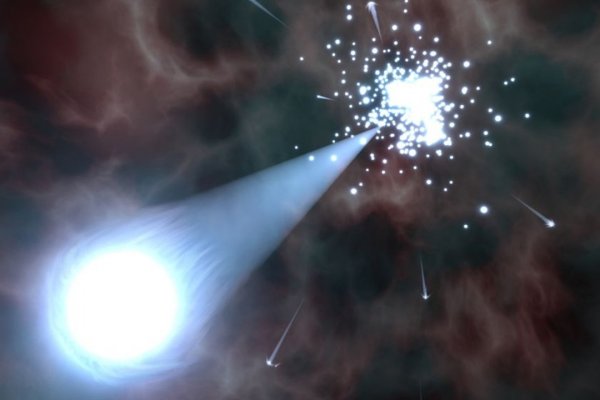A ground-breaking study led by Mar Carretero-Castrillo, a predoctoral researcher at the Institute of Cosmos Sciences of the University of Barcelona (ICCUB) and the Institute of Space Studies of Catalonia (IEEC), has identified a significant population of runaway stars in the Milky Way using data from the Gaia Data Release 3 (DR3). The paper, titled "Galactic runaway O and Be stars found using Gaia DR3," reveals new insights into the dynamics of massive stars and their intriguing behaviours.
The research, published last week in Astronomy and Astrophysics, introduces a novel two-dimensional method in velocity space to uncover massive and young runaway stars, which are moving with a high velocity with respect to their surrounding stars. The study focused on the stars present in the Galactic O-Star Catalogue and Be Star Spectra Database, utilizing Gaia DR3 precise astrometric measurements to derive velocities in the plane of the sky. O and Be stars are hot, massive and young stars. In particular, Be stars contain a circumstellar disk surrounding them.
The team identified 106 runaway O stars, with 42 new discoveries and 69 Be runaway stars, 47 of which are new discoveries. Runaway stars exhibited on average a large distance from the Galactic plane, which is indicative of past ejections. Also, seven X-ray binaries and one gamma-ray binary, showing high-energy emission, were found among the runaway stars. This could strengthen the idea that a fraction of runaways can be part of the population of high-energy sources.
Massive young stars play a crucial role in various astrophysical phenomena, from gamma-ray bursts to supernova explosions. In the present study, over 25% of O stars and 5% of Be stars are found to be runaway stars, with O stars showing larger velocities. Massive runaway stars can be produced by dynamical ejection in star clusters or by supernova explosions in binary systems. The study favours the former based on the observed percentages and velocities.
In addition, the study's comprehensive simulations in the three-dimensions velocity space suggest that the percentages of runaway O and Be stars could be even higher than observed. The findings open avenues for identifying more and new runaway stars in our Galaxy, making use of radial velocities in the future.
Mar Carretero-Castrillo, Lead Author, ICCUB: "the identification of so many massive runaway stars opens the door to discover new interesting astrophysical sources. We have released the catalogues of the runaway stars found in open format to the scientific community to maximize the exploitation of the potential discoveries”.
This groundbreaking research not only expands our understanding of massive star dynamics but also sets the stage for further investigations into high-energy systems associated with runaway stars.
Reference:
M. Carretero-Castrillo, M. Ribó, J. M. Paredes
Astronomy & Astrophysics, Volume 679, November 2023, 21 pages



